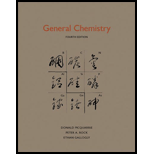
Concept explainers
(a)
Interpretation:
Element
Concept Introduction:
In the periodic table, the elements that are present in Group 1, 2, and 13 t0 18 are known as main group elements. They are also called as representative elements. These elements are present in abundant quantity on Earth’s crust. Number of valence electrons present in the atom of representative elements decides its chemical properties.
Elements that are present in Group 3 to Group 12 are known as
The elements that are present in the lanthanide series and actinide series are known as inner transition elements.
Metals are the ones that conduct electricity and heat. They are present in left side of the periodic table. As moving from left to right in periodic table, the metallic character decreases. Semi-metals are the ones that possess both metallic and nonmetallic properties. Nonmetals are the ones that do not conduct electricity. They are present in right side of the periodic table.
(b)
Interpretation:
Element
Concept Introduction:
Refer part (a).
(c)
Interpretation:
Element
Concept Introduction:
Refer part (a).
(d)
Interpretation:
Element
Concept Introduction:
Refer part (a).
(e)
Interpretation:
Element
Concept Introduction:
Refer part (a).
Want to see the full answer?
Check out a sample textbook solution
Chapter 3 Solutions
General Chemistry
 ChemistryChemistryISBN:9781305957404Author:Steven S. Zumdahl, Susan A. Zumdahl, Donald J. DeCostePublisher:Cengage Learning
ChemistryChemistryISBN:9781305957404Author:Steven S. Zumdahl, Susan A. Zumdahl, Donald J. DeCostePublisher:Cengage Learning ChemistryChemistryISBN:9781259911156Author:Raymond Chang Dr., Jason Overby ProfessorPublisher:McGraw-Hill Education
ChemistryChemistryISBN:9781259911156Author:Raymond Chang Dr., Jason Overby ProfessorPublisher:McGraw-Hill Education Principles of Instrumental AnalysisChemistryISBN:9781305577213Author:Douglas A. Skoog, F. James Holler, Stanley R. CrouchPublisher:Cengage Learning
Principles of Instrumental AnalysisChemistryISBN:9781305577213Author:Douglas A. Skoog, F. James Holler, Stanley R. CrouchPublisher:Cengage Learning Organic ChemistryChemistryISBN:9780078021558Author:Janice Gorzynski Smith Dr.Publisher:McGraw-Hill Education
Organic ChemistryChemistryISBN:9780078021558Author:Janice Gorzynski Smith Dr.Publisher:McGraw-Hill Education Chemistry: Principles and ReactionsChemistryISBN:9781305079373Author:William L. Masterton, Cecile N. HurleyPublisher:Cengage Learning
Chemistry: Principles and ReactionsChemistryISBN:9781305079373Author:William L. Masterton, Cecile N. HurleyPublisher:Cengage Learning Elementary Principles of Chemical Processes, Bind...ChemistryISBN:9781118431221Author:Richard M. Felder, Ronald W. Rousseau, Lisa G. BullardPublisher:WILEY
Elementary Principles of Chemical Processes, Bind...ChemistryISBN:9781118431221Author:Richard M. Felder, Ronald W. Rousseau, Lisa G. BullardPublisher:WILEY





